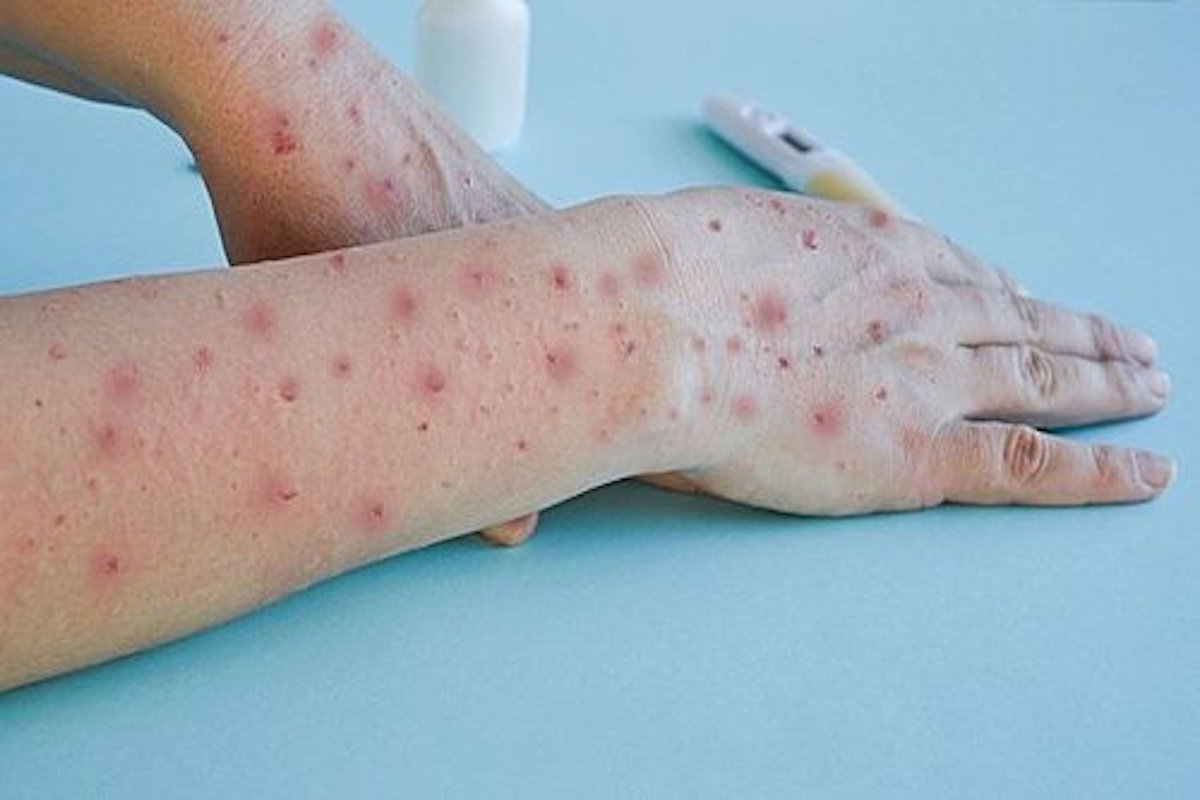Chickenpox, also known as varicella, is a highly contagious viral disease that affects children and adults alike. It spreads easily through the air or by contact with an infected person’s skin lesions. While the illness is usually mild, it can lead to serious complications, especially in vulnerable populations. In this article, we will delve into the causes, symptoms, diagnosis, and treatment options.

What Is Chickenpox?
Chickenpox is a common childhood illness that causes a rash, itching, and fever. The virus that causes it, the varicella-zoster virus, is a member of the herpesvirus family. Once a person has had chickenpox, the virus remains dormant in the body and can later cause shingles, a painful condition that affects the nerves and skin.
Causes & Types of Chickenpox
Chickenpox is highly contagious and spreads from person to person through the air or by contact with the fluid from the blisters. The virus can also be transmitted through indirect contact, such as touching objects contaminated with the virus. There are two types: primary varicella-zoster virus infection and varicella-zoster virus reactivation. Primary varicella-zoster virus infection occurs when a person is exposed to the virus for the first time, while varicella-zoster virus reactivation occurs when the virus that has been dormant in the body reactivates, causing shingles.
Who Is At Risk?
Anyone who has not had chickenpox or been vaccinated against it is at risk of contracting the virus. Children under the age of 12 are the most susceptible, but adults can also get varicella, especially if they have not been vaccinated or previously had the disease.
People who are immunocompromised, such as those with HIV or cancer, are at a higher risk of developing severe complications. Pregnant women who have not had chickenpox are also at risk, as the virus can cause birth defects or even miscarriage.
Symptoms of Chickenpox
The symptoms usually appear within 10 to 21 days after exposure to the virus. The first symptoms are usually a fever, headache, and a feeling of fatigue. A few days later, a rash of itchy blisters appears on the face, chest, and back, spreading to the arms and legs. The blisters eventually burst, forming scabs that fall off after about 1-2 weeks.
How Is It Diagnosed?
Chickenpox is usually diagnosed based on its characteristic symptoms, especially the rash. A doctor may also perform a blood test to confirm the diagnosis, especially if the person has a weakened immune system.
Treatment Options for Chickenpox
There is no specific treatment, but antiviral drugs and antihistamines can help to reduce the severity of symptoms and prevent complications. Acetaminophen can also be used to reduce fever and relieve pain. To prevent the spread of the virus, people with varicella should stay at home until all the blisters have crusted over. They should also avoid contact with anyone who has not had chickenpox or been vaccinated against it.
Reported Chickenpox Cases in the US over the Last 10 Years
This table shows how many people had chickenpox in the United States in the past ten years. It helps us understand how many people in the US got sick from the disease each year. The numbers change from year to year. The table can help people who work to keep us healthy know if the number of cases is going up or down.
| Year | Number of Reported Cases |
|---|---|
| 2011 | 14,263 |
| 2012 | 5,450 |
| 2013 | 7,760 |
| 2014 | 11,633 |
| 2015 | 9,486 |
| 2016 | 5,444 |
| 2017 | 8,902 |
| 2018 | 6,340 |
| 2019 | 10,399 |
| 2020 | 8,616 |
Why It’s Important to Vaccinate Your Children
It is important to vaccinate against the disease and take measures to prevent its spread, especially in vulnerable populations. If you or your child has chickenpox, seek medical attention to manage symptoms and prevent complications. Still need information about this condition, or do your symptoms not match those listed above? Then search further here quickly:

